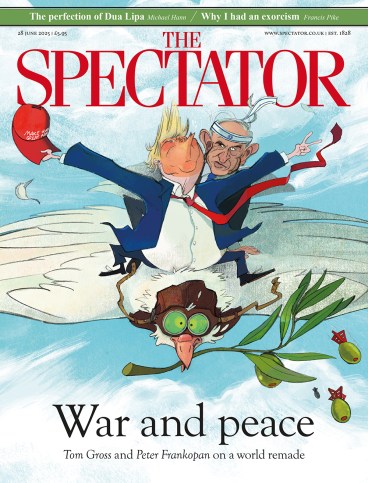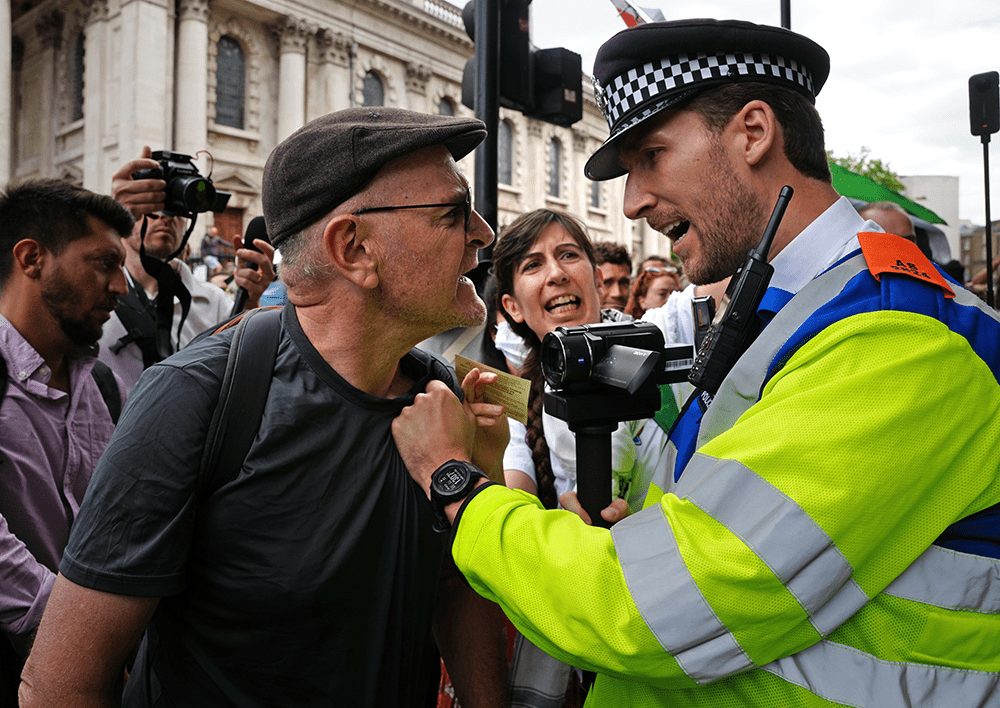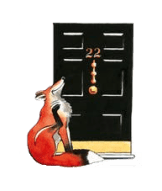
It was airily pleasant to walk round Parliament Square on Monday morning. I had come up to London to go to parliament and to interview Kemi Badenoch at a Policy Exchange event across the square. Palestine Action had announced a protest march against Donald Trump’s and Israel’s ‘genocide’ for that time. Although the Met had banned it from the area, I had recently witnessed so many ill-contained and threatening protests there – almost all for Palestinian causes – that I fully expected delay, disruption and occasional harassment. This time, however, it turned out that the Met meant business. The protest was well-contained in the designated streets round Trafalgar Square. May this mark the permanent change many of us have long been calling for.
The delightful absence of trouble that day brought home to me how oppressive those past protests had become. The Met’s blind commitment to ‘the right to protest’ effectively ceded control of the streets, public spaces and Tube stations, giving the extremists a preposterous media salience. That right kept cancelling more important rights – those of MPs, peers and parliamentary staff to get on with their work and of the ordinary public to attend parliament as they please or go about their normal business. The constant threat to the security of parliament has increasingly cut it off, created ugly physical barriers and intimidated the parliamentary authorities. By besieging parliament, you subtly delegitimate it. The Met Commissioner, Sir Mark Rowley, justified his new toughness by saying that Palestine Action is ‘an organised extremist criminal group’, as witness the expensive damage it claims to have done to RAF planes at Brize Norton. It is, but he could have said much the same 18 months ago of the endless semi-violent anti-Semitic elements which so often march against Israel without a word to say against Hamas’s 7 October massacres or Iran’s bomb. Theirs have not been what Sir Mark calls ‘protests of a different character’ from those of Palestine Action. They have been cut from the same keffiyeh. He says the charges against Palestine Action ‘represent a form of extremism that I believe the overwhelming majority of the public reject’. What forms of extremism do the overwhelming majority not reject? Anyway, there is joy over the sinner that repenteth.
If Palestine Action is to be proscribed, this is the time to pursue its other boasted achievements. In March last year, in my Cambridge college, Trinity, it claimed responsibility for the slashing and spray-painting of de Laszlo’s portrait of Arthur Balfour, prime minister, chancellor of Cambridge University and author of the Balfour Declaration. The incident was filmed and posted by the perpetrators, but a year later the police said that ‘the investigation has now been filed’. It is hard to believe that these outrages are untraceable, once you identify their Islamist/far-left political motivation and therefore know where to look.
By chance, it is 50 years ago this autumn that I matriculated at Trinity. There is a half-century dinner there next month for all of us, but not for me, due to a clerical error in the college’s email records. This error has now been corrected with a vengeance and I have since received eight invitations to the Trinity Giving Days in which alumni contribute to bursaries. What is more exciting, however, is that the period in question has also been marked in verse. Four years ago, I drew attention (see Notes, 10 July 2021) to The Examined Life, James Harpur’s book of poetry about his time at Cranleigh, his public school in Surrey, which in its 160-year existence has achieved respectability rather than celebrity and is therefore a tricky subject for the muse. The book was a brilliant success, doing what good poetry does uniquely well – suggesting the general from the minutely observed particular. Now Harpur has done this again with Trinity, where he was a year below me, in a new volume called The Magic Theatre. Cambridge has been the subject of rather more poems than Cranleigh, so the bar is higher. But I think Harpur clears it.
In my first year at Trinity, I was thrilled to hear that the set I was sharing with Oliver Letwin – G3 New Court – was the same to which Tennyson returns in ‘In Memoriam’. It had been occupied by his beloved Arthur Hallam, whom the poem mourns:
Up that long walk of limes I past
To see the rooms in which he dwelt.
Another name was on the door:
I linger’d; all within was noise
Of songs, and clapping hands, and boys
That crash’d the glass and beat the floor;
Where once we held debate, a band
Of youthful friends, on mind and art,
And labour, and the changing mart,
And all the framework of the land;
When one would aim an arrow fair,
But send it slackly from the string;
And one would pierce an outer ring,
And one an inner, here and there;
And last the master-bowman, he,
Would cleave the mark.’
That could have been an exact description of Oliver’s debating prowess, displayed in those very rooms.
The trouble with ‘In Memoriam’, however, is that such exactness is mostly absent. It is a great poem, but more about grief and ‘the unquiet heart’ (‘in words, like weeds, I’ll wrap me o’er’) than one rooted in the specific. In this sense, I get more out of Harpur’s Cambridge than Tennyson’s. Whether he writes about revising or punting or amateur acting (‘the tinnitus of humiliation’) or lost love, he places his young self in those strange three years granted to you in that (then) small town where your life is more imagined than real, and the better for it. On one tiny point I must correct James Harpur. In a poem which turns out to be about me, I have ‘a sleeve of navy velvet’. No; it was only corduroy. We were poor students, after all.








Comments